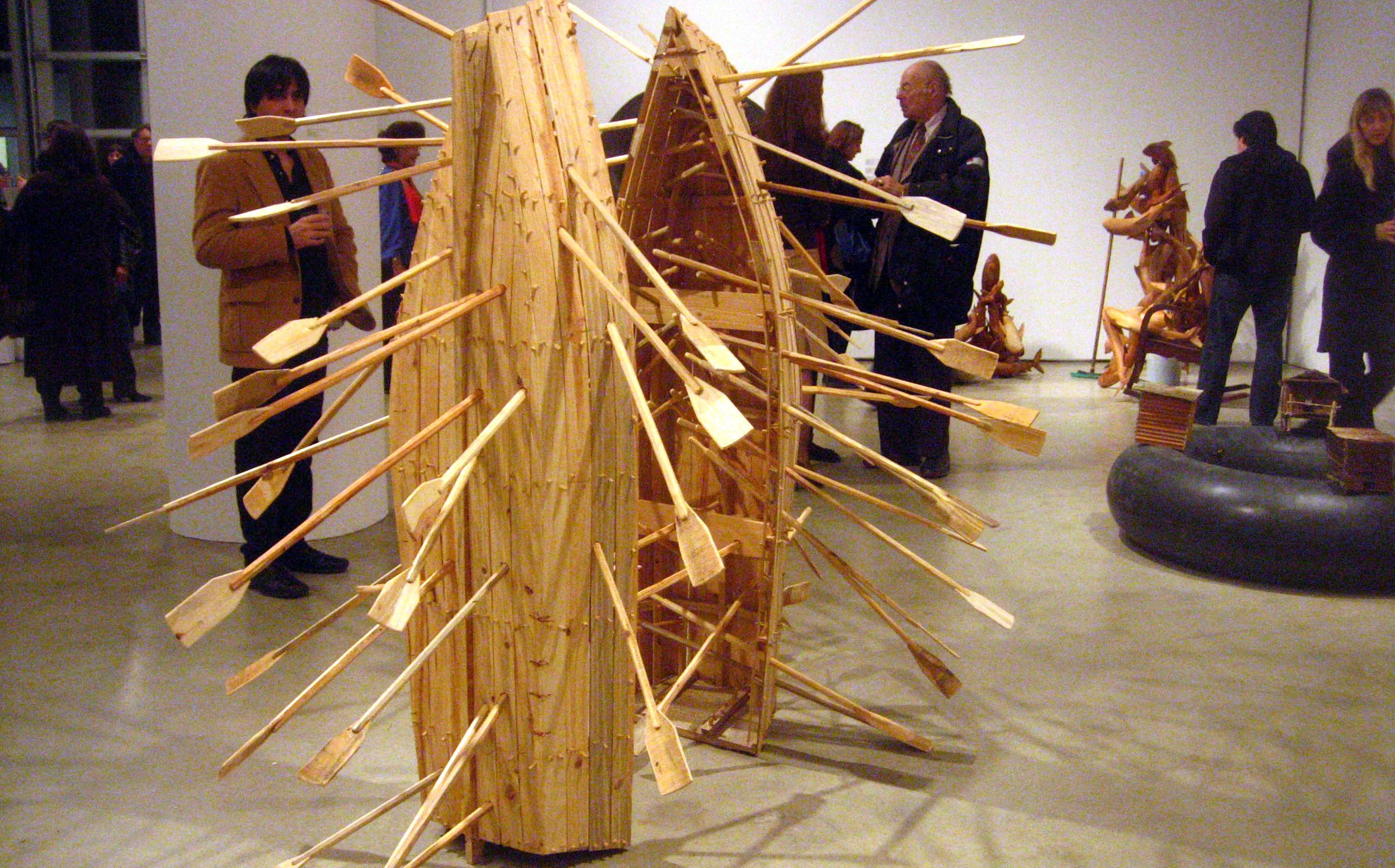In Cuba, it costs $4.50 for one hour’s worth of Internet access at a speed two times slower than the rest of the world. Only five percent of Cubans have access to unrestricted Internet. But in Havana, things might be starting to change. Kcho, the internationally acclaimed Cuban plastic artist, has opened his Internet service to the general public in a small cultural center. Though access is far from ideal as the Internet is still immensely slow when the center is crowded, it provides a rare source of Internet access that has existed for very few people in Cuba. Heavily censored and guarded Internet access in Cuba has forced many people to include taxicabs and long lines in their daily routines just to check their emails while others have turned to black market sources.
Although it costs Kcho $900 per month to maintain unrestricted internet access, the project seems to be a continuation of his community-based art projects, often meant to preserve the heritage of different Cuban cities and create job skills for young people. “It is expensive,” he said. “But the benefit is tremendous. I have something that is great and powerful. I can share it, and I am doing so.” Part of what has enabled this project to be so inherently public has been the approval of the project by Etesca, the state-owned telecommunications utility that controls the Internet.
It is unclear what, specifically, about this project compelled Etesca to approve it. Kcho is a well-known supporter of the political regime in place in Cuba, and some suspect it may be a government attempt to put an acceptable face on the regime’s attempt to concede to a public demand for Internet access. Indeed, the center hosted Fidel Castro last year. It could also be influenced by recent discussions of the restoration of diplomatic ties between the United States and Cuba, as an anticipation of potentially introducing companies like Google and Twitter, and increased tourist traffic, to Cuba.
To some extent, it is likely a mix of all of these things. At once, an artistic act of altruism and a state-deliberated political move to willingly dissolve Internet sanctions at a time when the Cuban public refuses to tolerate poor and restricted Internet connection. It also presents potential for Internet business and diplomatic relationships to flourish between the United States and Cuba.
Although it costs Kcho $900 per month to maintain unrestricted internet access, the project seems to be a continuation of his community-based art projects, often meant to preserve the heritage of different Cuban cities and create job skills for young people.
The potential introduction of tech companies like Google and Twitter into Cuba, while not necessarily immediately feasible—Cuba may not have the national funds for it—presents the United States with another tech-fueled business opportunity. While having big American companies providing technological infrastructure could quench the practical need for reliable Internet in Cuba, the economic might of these companies could also mean the compromise of Cuban independence. Potential for an unequal technological dependence on the United States hits the sensitive chord of historical domination and colonialism by the United States that sparked the Revolution. Ideological and historical ties of the Cuban Revolution still remain, especially in this public project. The password for Kcho’s Internet access is aquinoserindenadie—here, nobody surrenders—an old revolutionary slogan. It’s a small but powerful nod to the legacy of U.S. colonial exploitation of Cuba, the revolution that overthrew it, and the battle to remain economically, ideologically, and politically autonomous that continues today.
Yet the government backing of Kcho’s project also represents a new social and national acceptance of widespread Internet use—a radical change from the staunch repression of Internet use by the government just four years earlier. Cuban government officials have notoriously denounced “alternative” bloggers critical of the government as being manipulated by the United States. Governmental repression and skepticism of the Internet reflected party anxiety that the Internet might play a role similar to that in the Arab Spring in Cuba—quick communication and quick access to world news might incite a mass movement among Cubans.
On a larger level, it is the acknowledgement that Internet in Cuba, does not necessarily have to come at the cost of Cuban independence. Instead, Internet may only serve to strengthen it. The national need for Internet is only growing stronger. Its provision and having formidable, improved access to Internet for Cuban citizens provides them with unprecedented access to the outside world. In theory, this could mean more influence of American culture, business, and politics. In reality, it will likely be a symptom of easing Internet sanctions. But it also means more social cohesion within the country. Citizens now have the capacity to communicate and organize with each other conveniently and quickly. Though this could pose a powerful threat to the power of the Cuban government, denying Cubans the ability to communicate is an even more powerful threat to independence.
More than anything else, Kcho’s project continues the community-centric approach to his artwork—it is recognition of what his country needs that he can provide. It is less of an attempt at remedying political relations between the United States and Cuba and radically liberalizing internet-tech relations, and more of a way to make daily conveniences like buying things off the web and talking to relatives and friends elsewhere possible. That it is state-supported may simply be government acknowledgement of the need for convenience.
